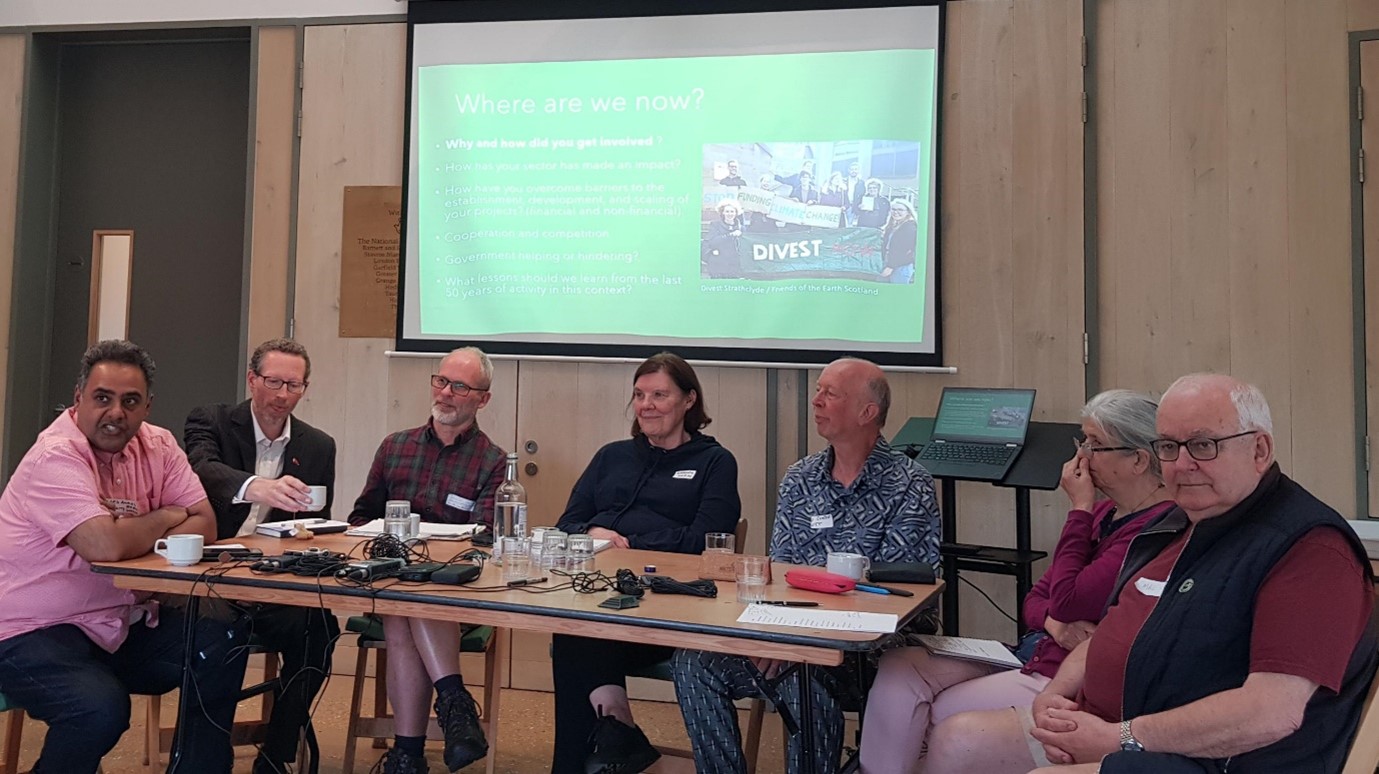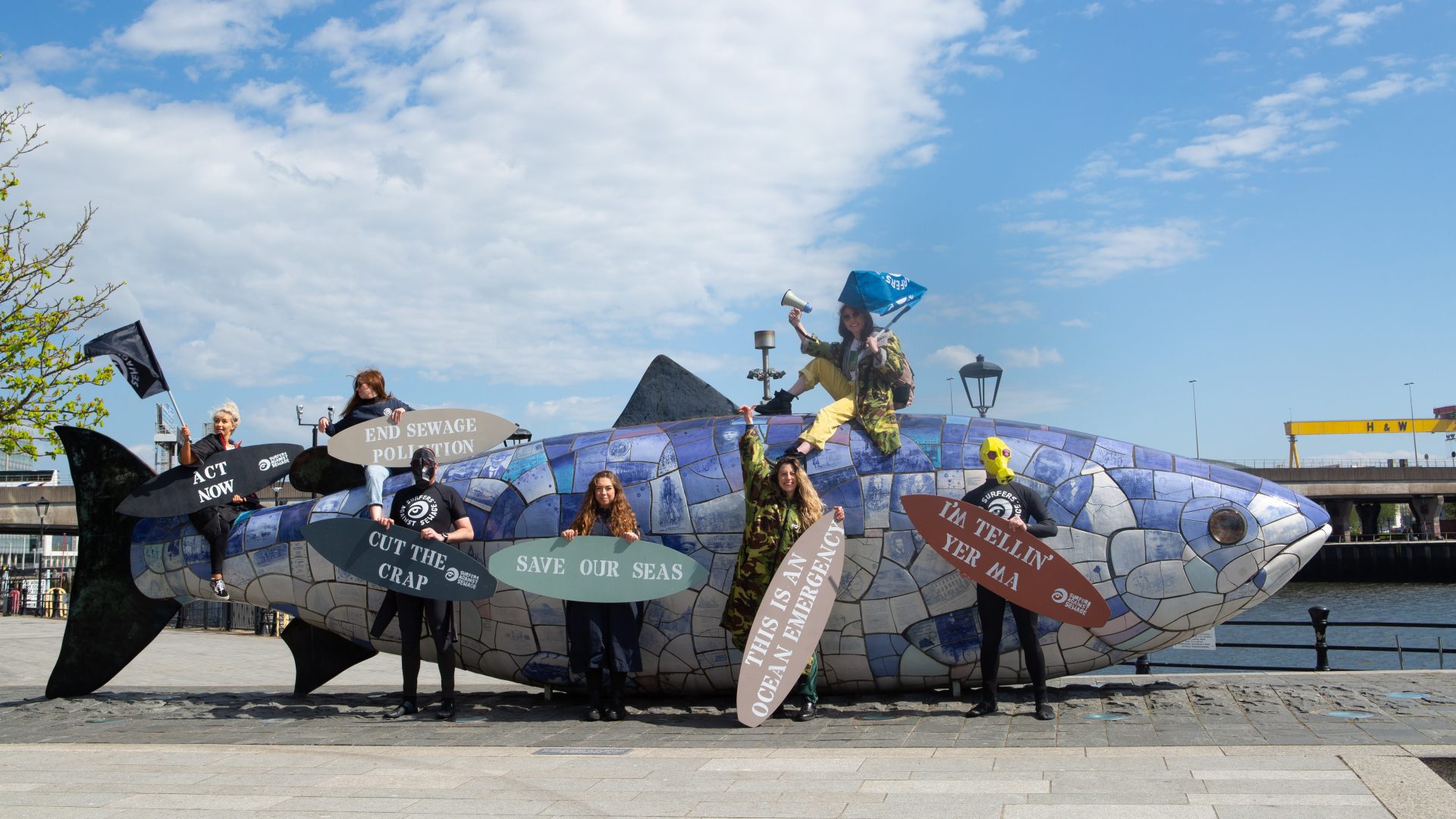When it comes to environmentalism, has the music industry lost its voice? Project Officer Chris Church and Co-investigator Oli Mould look back over 60 years of protest music
The Music Industry and the Environmental Movement
There is no denying that music has always been a realm of potent political action, and the environmental movement is no stranger to the lyrics, sounds and atmospheres of music and sound artists. But the more recent historical (i.e. from the 1960s onwards) connection between music and environmentalism has been marked by periods of alignment and divergence, often reflecting broader societal attitudes toward activism and social change.
Like all artistic forms, the popular music industry has engaged with various social movements throughout the 20th and 21st centuries, its relationship with environmentalism has been inconsistent and arguably peripheral compared to other issues like war, race, and social justice. This blog post explores how the music industry has responded to environmental concerns, tracing key moments and shifts in the representation of environmental issues in popular music and considers the factors that have shaped the relative absence of a sustained environmental discourse within popular music.
The Early Years: The 1960s and the Rise of Protest Music
The 1960s were a decade marked by the rise of protest music, as artists used their platform to address pressing social issues. Songs like Bob Dylan's ‘Hard Rain's A-Gonna Fall’ (1962) and Malvina Reynolds' ‘What Have They Done to the Rain’ (1962) – a hit single for pop group The Searchers - raised awareness of environmental degradation, particularly the radioactive pollution resulting from nuclear weapons testing. However, while these songs touched on environmental concerns, the broader focus of protest music during this period was directed towards much more pressing social issues such as civil rights, the Vietnam War, and racial injustice. Environmentalism, as a cohesive movement, had not yet emerged on a large scale, and its representation in music remained secondary.
The Late 1960s and the Birth of Environmentalism
The late 1960s saw the rise of the environmental movement, spurred by events such as the publication of Rachel Carson's ‘Silent Spring’ in 1962 and the first Earth Day in 1970. Music began to reflect these concerns more directly, with Joni Mitchell's ‘Big Yellow Taxi’ (1970) standing as one of the most iconic environmental songs of the era. Its lyrics, which lament the destruction of natural landscapes in favour of urban development, have since become a touchstone for environmental activism. The Beach Boys joined in with ‘Don’t Go Near The Water’. Surprisingly, even mainstream acts like The Osmonds, known more for their boy-band appeal, contributed to the environmental discourse with their song ‘Crazy Horses’ (1972), which addressed the issue of pollution caused by automobiles. The fact that a popular boy band tackled such a topic is a testament to how pervasive environmental concerns were becoming, even if they were not always at the forefront of popular culture.
David Bowie, a cultural icon known for his ability to tap into, and forge, the zeitgeist, also aligned himself with environmental causes during the early 1970s. One of his first major performances in London, during his ‘Starman’ era, was a benefit concert for Friends of the Earth (FoE) and the Save the Whale campaign. This demonstrated how environmentalism was beginning to infiltrate mainstream consciousness, albeit in a sporadic manner.

Figure 1: Friends of the Earth ‘Save the Whale’ event poster (personal archive, Chris Church)
The 1970s and Punk: A Shift Away from Environmentalism
The rise of punk rock in the mid-1970s brought a radical shift in the political landscape of music. Punk was characterized by its focus on anti-establishment rhetoric, with significant attention given to issues of racism, social inequality, and opposition to the far-right, exemplified by movements like the Anti-Nazi League. However, environmental issues were largely absent from the punk agenda. In part, this could be attributed to the perception that environmentalism was linked to the "beards and sandals" stereotype, a group out of touch with the confrontational, urban aesthetic of punk culture.
Nevertheless, the late 1970s did see some engagement with environmental concerns, particularly around the issue of nuclear power. In the USA the ‘No Nukes: The Muse Concerts For a Non-Nuclear Future’ was 1979 Madison Square Garden concerts by the Musicians United for Safe Energy collective which became a best-selling triple live album. In the UK the emergence of the ‘No Nukes Music’ organisation, which worked with campaign groups to raise awareness about the dangers of nuclear energy, garnered some support from musicians. However, it never achieved the same level of impact as later movements like Red Wedge, which focused on left-wing politics in the 1980s. Similarly, while the Campaign for Nuclear Disarmament (CND) benefited from musical support, particularly through fundraisers like the early 1980s Glastonbury Festivals, the environment was not a central focus of the era’s musical activism.
The 1980s: The Height of Music and Social Change
The 1980s was arguably the apotheosis of the intersection of music and social activism, with landmark events such as Band Aid, Live Aid, the Amnesty International ‘Conspiracy of Hope’ tour, and the ‘Free Nelson Mandela’ campaign – making it to Top of the Pops - bringing global attention to issues of poverty, human rights, and apartheid in South Africa. However, despite the success of these events, there was no equivalent large-scale musical mobilization around environmental issues. A proposed ‘Live Earth’ concert, intended to raise awareness of climate change, never materialized despite individual artists continued to engage with environmental causes. For example Paul McCartney’s 1989 world tour was prominently branded as supporting Friends of the Earth (with an original ticket shown in Figure 2), and Sting faced both praise and criticism for his work with indigenous peoples in the Amazon, ultimately founding the successful Rainforest Foundation.

Figure 2: ticket for Paul McCartney’s 1989 FoE world tour (personal archive, Chris Church)
Environmental organizations like Greenpeace and Oxfam also benefited from their association with music festivals like Glastonbury, which increasingly incorporated environmental themes into their branding and beneficiaries. Yet, these initiatives often existed on the fringes of popular music culture, and environmental activism never reached the same level of prominence as other social causes within the industry.
The 1990s and Beyond: Fragmentation and the Rise of Alternative Music
As the music industry fragmented in the 1990s and rave culture gained popularity, new forms of radical expression emerged. Groups like Spiral Tribe and Mutoid Waste embodied the DIY ethos of rave culture, with some aligning themselves with environmental causes, particularly in opposition to road-building projects and other forms of ecological destruction. The 1992 UN Rio Summit generated a wave of environmental programming, including the single ‘One World’, which featured cameos from prominent musicians. However, the song failed to capture widespread attention, signalling a broader trend in which environmentalism became more associated with alternative and underground music, while the mainstream largely moved on (or perhaps was seen as rather insincere).
In the United States, artists like Patti Smith, Neil Young, Bruce Hornsby and Bruce Springsteen continued to engage with environmental activism, often through events like Farm Aid, which tackled issues of globalization and its impact on small farmers. Yet, by the early 2000s, popular music seemed increasingly detached from environmental concerns, even as climate change became a more pressing global issue.
The Present: Depoliticization and the Climate Crisis
In recent years, the popular music industry has largely distanced itself from political and environmental activism even more. Despite the high-profile nature of climate change debates between 2019 and 2022, including the high-profile media attention of figures like Greta Thunberg, the global climate strikes and the ‘new’ wave of activists (such as XR and Just Stop Oil), there has been little significant musical engagement with these issues. While bands like Radiohead have been vocal supporters of environmental causes (particularly through their involvement with the Big Ask in 2006 (pictured in Figure 3) and the Climate Act campaign in 2008) and Coldplay have signalled how their world tours have ambitious low, or even zero carbon emissions targets, these efforts have been the exception rather than the rule.

Figure 3: Radiohead playing for the Big Ask in 2006 (Photo: Chris Church)
Part of this disengagement may stem from the changing economic landscape of the music industry. With the rise of streaming platforms like Spotify, musicians earn significantly less from recorded music, leading them to rely more heavily on live performances for income. This shift makes it more difficult to organize benefit concerts or take politically risky stances, as artists may fear alienating portions of their fanbase in these fraught, political times when identity politics and ‘cancel culture’ are rife. The case of Taylor Swift, who reportedly faced pressure not to endorse Kamala Harris recently, highlights the delicate balance that popular artists must navigate in an increasingly polarized political climate.
A Missed Opportunity?
The relationship between music and environmentalism has been sporadic and inconsistent, particularly within the popular music industry. While environmental issues have occasionally been addressed by popular artists, they have never achieved the same level of sustained attention as other social movements. As climate change becomes an increasingly urgent global crisis, the question remains whether the music industry will once again find its voice in the fight for environmental justice, or whether it will continue to shy away from controversy. In an era where protest songs like Bob Dylan’s ‘Masters of War’ (in which the lyrics “…and I hope that you die and your death will come soon” addressed to arms manufacturers) may no longer find a home in the mainstream which has become too cautious and reticent to take risks, the absence of a strong environmental message in contemporary music represents a missed opportunity.
























